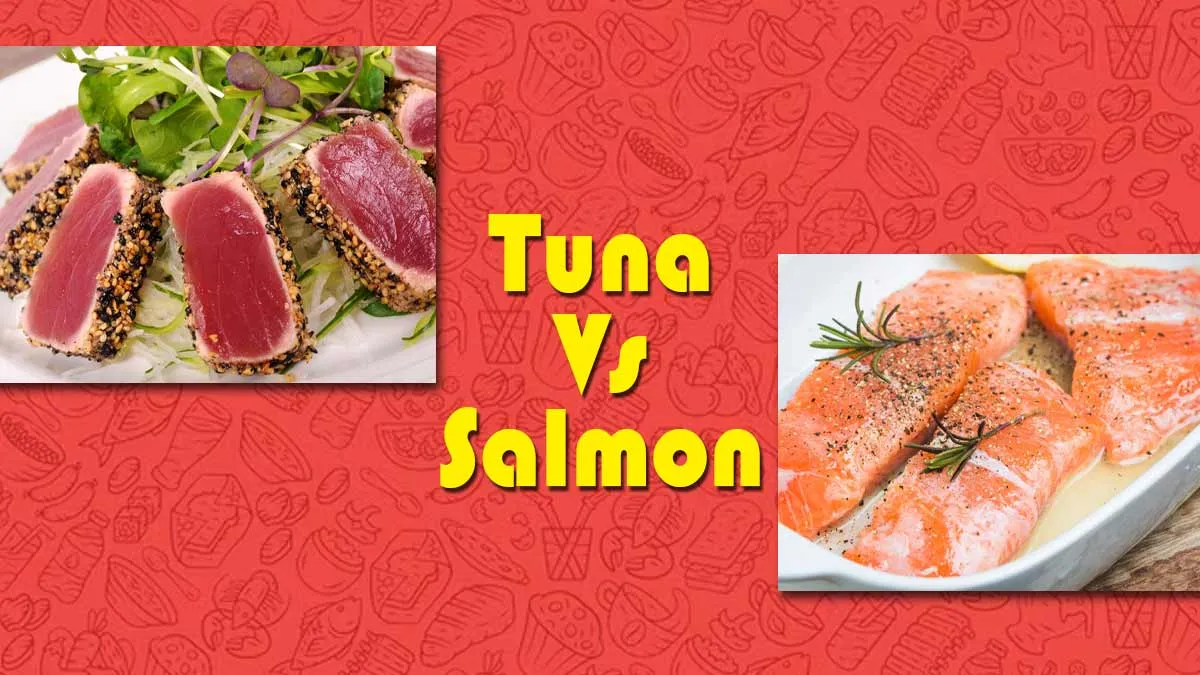
When it comes to choosing fish for a healthy meal, tuna and salmon are two of the most popular options, each with its own set of benefits. Whether you're trying to boost heart health, improve brain function, or just enjoy a tasty, protein-packed dish, both of these fish have a lot to offer. But how do you choose between them? Is salmon truly the healthier option, or does tuna have its own hidden advantages? We spoke to our expert, Eshanka Wahi, a Delhi and Dubai Based Culinary Nutritionist and Holistic Wellness Coach and Founder of Eat Clean with Eshanka, who explained the key differences between these two fish and help you make the best choice for your health and lifestyle.
Table of Content:-
Tuna vs Salmon: Key Differences and Benefits
1. Omega 3 Fatty Acids

Omega-3 fatty acids, which are crucial to sustaining cardiovascular wellness, reducing inflammation, and encouraging brain health, are prevalent in both salmon and tuna. But when it concerns omega-3 quantity, salmon is the uncontested winner. “Depending on the species, a 3-ounce serving of wild-caught salmon typically includes 1,500 mg of omega-3s, however, a similar quantity of tuna is limited to 200–500 mg,” said Wahi.
2. Protein
Protein of excellent quality can be discovered in both fishes. As a leaner fish, tuna can offer a greater amount of protein around 24 grams per 3 ounces than salmon, which has approximately 22 grams per 3-ounce serving. Both fish, however, make significant improvements to immune and muscle recuperation, and the protein composition difference is minor.
Also Read: Fish and Heart Health: How Fish Can Lower Your Risk Of Heart Disease, Expert Explains
3. Calorie and Fat Content

Since salmon contains higher omega-3 fatty acid levels, it tends to have a higher fat level. “Wild-caught salmon generally contains 170 calories and 10 grams of fat per 3-ounce meal. However, tuna is a lower-calorie option, with just under 120 calories and 1 gram of fat per 3-ounce meal,” added Wahi. Both fats are advantageous, but tuna might be more appropriate if you're trying to cut carbohydrates overall.
4. Cardiovascular Wellness
Salmon is rich in omega-3 fatty acids, which offer significant benefits for the cardiovascular system. Consuming omega-3 fatty acids can help lower blood pressure, reduce the risk of heart disease, and improve lipid levels. While tuna also contains omega-3s, the lower concentrations in tuna do not provide the same level of cardiovascular protection as salmon.
According to a 2016 study involving 38 healthy adults, the group that consumed fatty fish daily for 4 weeks saw an increase in HDL (good) cholesterol and a reduction in triglyceride levels. In contrast, the group that ate lean fish or meat experienced no changes in their cholesterol levels.
Also Read: Should People With High Cholesterol Eat More Fish?
5. Brain Health
While omega-3 fatty acids contained in both salmon and tuna help to improve memory and thinking abilities, salmon's elevated omega-3 amount provides an even greater boost to brain health. “These fatty acids have been linked with enhanced control of emotions, memory, and focus, which could contribute to avoiding cognitive decline caused by age,” said Wahi.
6. Weight Loss and Satisfaction

Both fish are excellent options for shedding weight. Given its lower fat content, tuna is a leaner alternative for people trying to cut calorie intake, however, salmon's higher fat content stimulates more satiety, which extends feelings of satisfaction. You can prevent binge eating and manage your weight loss effectively this way.
7. Mercury Levels
The mercury content in tuna, particularly in certain types like albacore, poses a significant health risk. Larger species of tuna, such as bigeye and bluefin, tend to accumulate higher levels of mercury. This can be hazardous, especially for young children, pregnant women, and individuals with weakened immune systems. According to a 2019 analysis of 117 yellowfin tuna from 12 global locations, it was found that many samples surpassed this limit, with some exceeding it by up to seven times.
Salmon, on the other hand, usually contains less mercury, particularly when it comes from environmentally friendly, natural fisheries.
8. Sustainability
When purchasing fish, sustainability should be taken into account. In broad terms, wild-caught salmon especially from fisheries that have been well-managed is more environmentally friendly than many tuna kinds, particularly those that are cultivated. Although farmed tuna consumes a lot of resources and is overfished, it can also be detrimental to the environment. The key to encouraging ocean health involves choosing fish that originate safely.
Bottomline
Wahi concluded, “As a result of its higher omega-3 content, cardiovascular benefits and lower mercury levels, salmon usually represents the healthier choice. However, for fewer calories and less fat, tuna is a terrific alternative. A range of fish, with a priority on sustainable, wild-caught sources, should be a part of your diet for the greatest health benefits. Long-term well-being will be supported by establishing a balance between the two fish species while taking sustainability and mercury levels into consideration.”
[Disclaimer: This article contains information provided by an expert and is for informational purposes only. Hence, we advise you to consult your professional if you are dealing with any health issues to avoid complications.]
Also watch this video
How we keep this article up to date:
We work with experts and keep a close eye on the latest in health and wellness. Whenever there is a new research or helpful information, we update our articles with accurate and useful advice.
Current Version